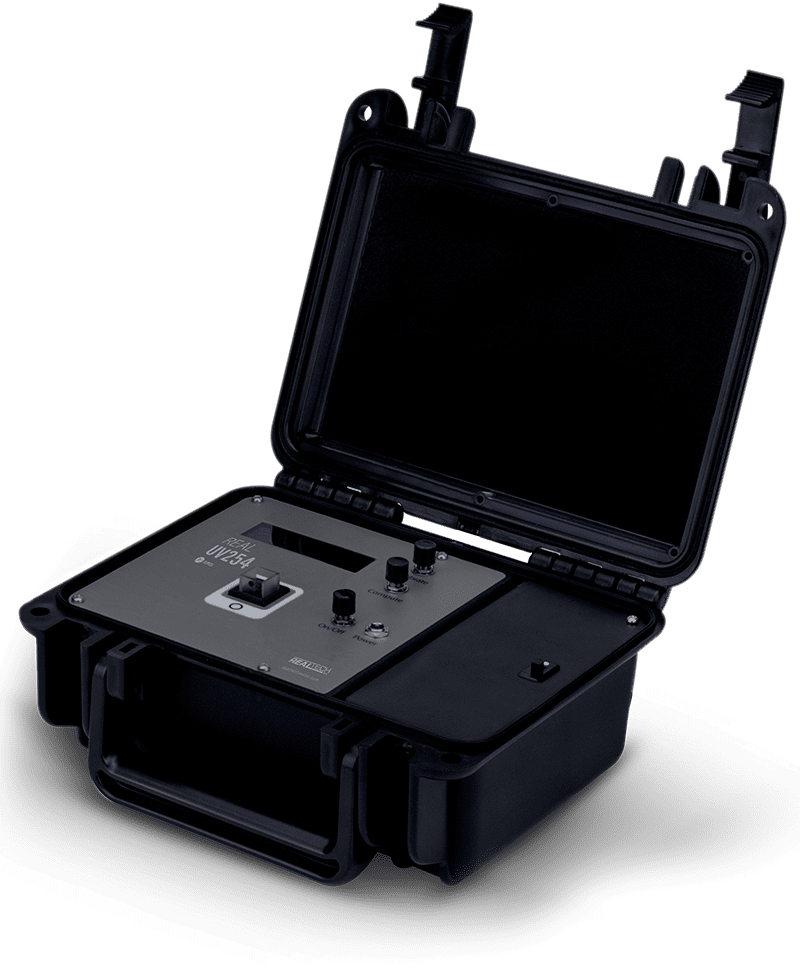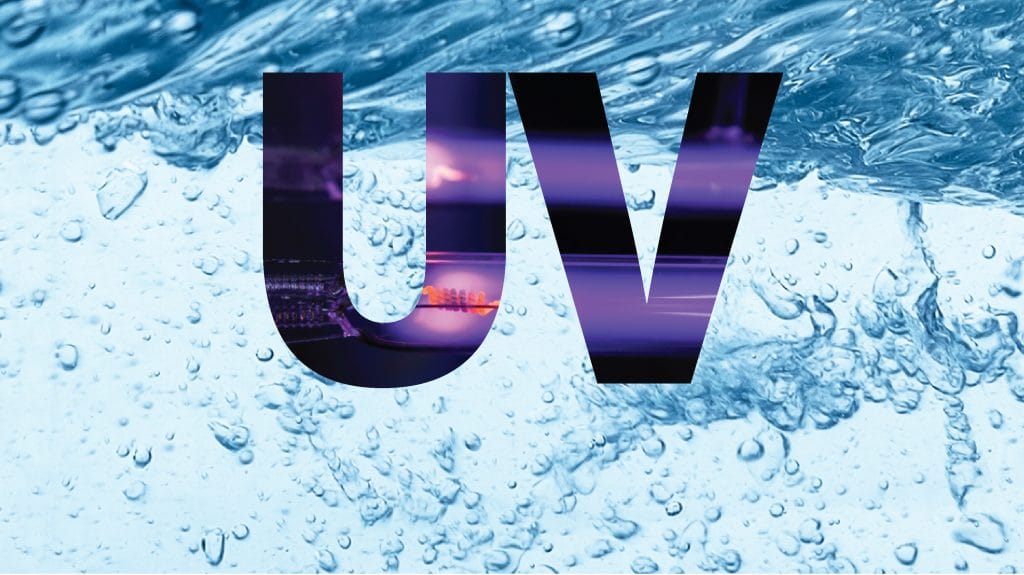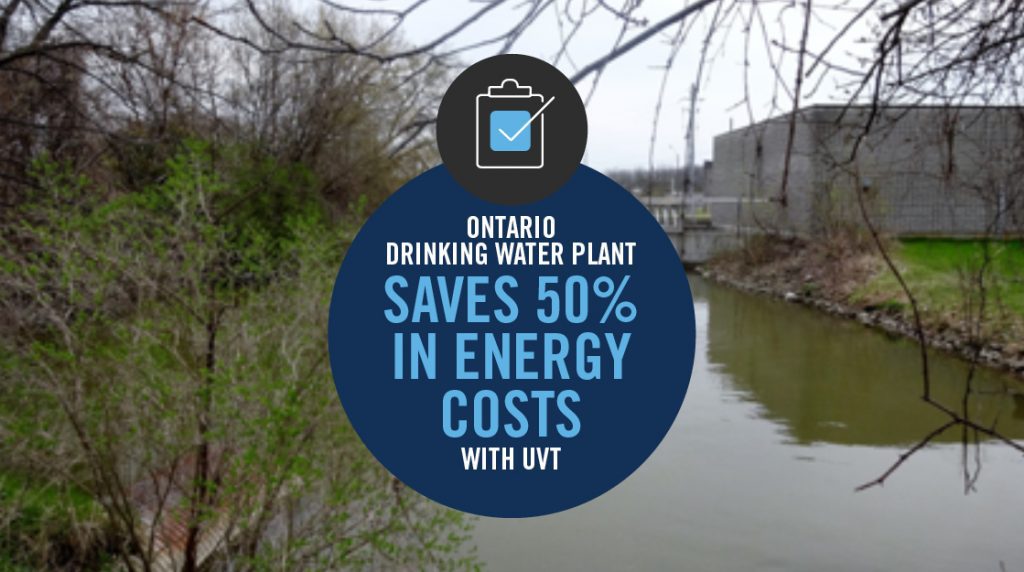UV transmittance, UV transmission or UVT is a measurement of the amount of ultraviolet light (commonly at 254 nm due to its germicidal effect) that passes through a water sample compared to the amount of light that passes through a pure water sample. The measurement is expressed as a percentage, % UVT.
WHY IS IT IMPORTANT?
Measurement of UV Transmittance is important for ultraviolet (UV) disinfection of drinking water, wastewater and process water. Low-pressure UV disinfection systems disinfect water using monochromatic UV light at the 254 nm wavelength. The effectiveness of a UV disinfection system is determined by the dose that the system is able to deliver to the target microorganisms in the water. The effective UV dose is dependent primarily on the combined effects of the UV light intensity, the exposure time and the UVT.
UV Transmission varies over time and from site to site as it is related to the quantity of organics, colloidal solids and other material in the water which absorb and scatter the UV light as it passes through the water column. In a UV disinfection system, if the UVT of the water is low, then the UV light is not able to penetrate the water as effectively, thereby reducing the potency of the dose. For this reason, it is very important to monitor UVT and ensure its levels are maintained above the manufacturer’s minimum for proper disinfection to occur.

Large drinking water and process water UV disinfection systems are often also designed with a method that allows the UV dose delivery to be calculated based on UV intensity, flow rate, and UVT, such as the USEPA UVDGM calculated dose approach method. Online UVT measurement is required for a calculated UV dose strategy to make accurate adjustments that result in proper disinfection.
The USEPA UVDGM, DVGW, and ÖNORM UV intensity set-point approach is common for small UV disinfection systems. While this approach does not enable calculated dosing, UVT monitoring is often still incorporated into the system as UVT is a valuable tool for quickly diagnosing operational problems, thus saving the operator time.
HOW TO MEASURE UVT
To measure UVT, ultraviolet light (commonly at 254 nm) is passed through a 10 mm quartz cell containing the sample water. The intensity of attenuated light is measured with a sensor, and compared to that of a pure water sample. The instrument then reports the value as a percentage.
Real Tech has the solutions to help our clients get the information they need, when they need it.
Discover our UV transmittance solutions here:
Real Tech offers a complete line of UVT monitoring and testing solutions.



